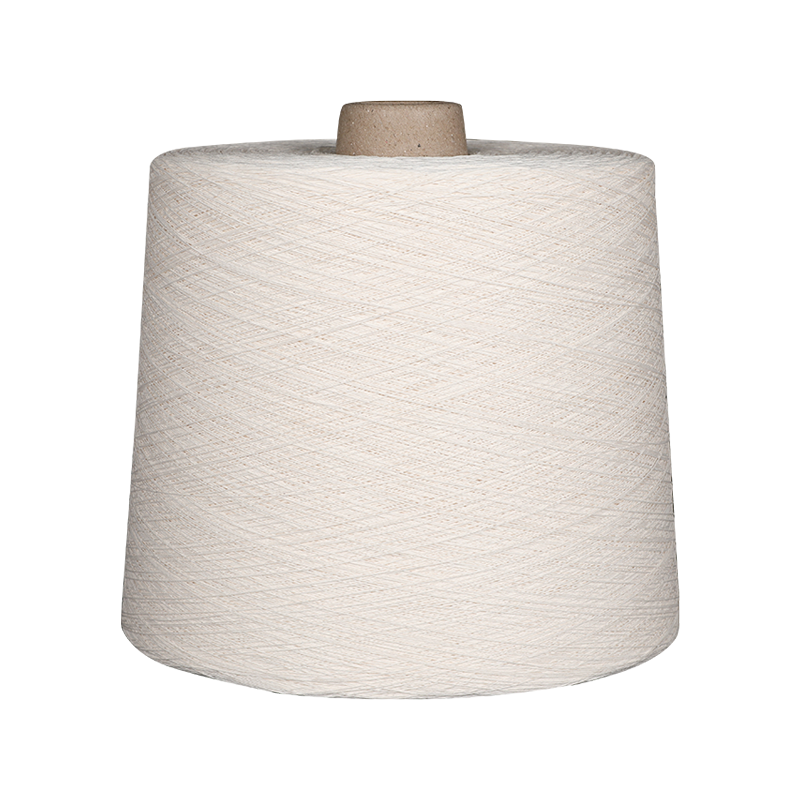As the world's attention to sustainable development and green manufacturing continues to heat up, the traditional textile industry is actively exploring more environmentally friendly raw materials. Against this background, Paper Yarn, as a new and renewable textile material, has gradually come into people's view and has shown great potential in many fields such as fashion, home furnishings, and handicrafts.
The production process of paper yarn is relatively simple and environmentally friendly:
Raw material preparation: Use renewable wood or recycled paper as the base material.
Forming and cutting: Cut the paper into long and thin strips for softening and strengthening.
Twisting/compounding: Improve its strength and flexibility by mechanical twisting or compounding the paper strips with other natural fibers (such as cotton and linen).
Dyeing and finishing: Dyeing, waterproofing or softening treatment is carried out according to the purpose to meet different application requirements.
The whole process does not require high temperature and high pressure, which greatly reduces the consumption of water resources and energy compared with traditional chemical fiber or cotton spinning processes.

Environmentally friendly and sustainable
Paper yarn is mostly made of degradable materials. It can decompose naturally after being discarded and will not cause environmental pollution. It is a typical green textile.
Light and breathable
Paper yarn is light in texture, has good air permeability and moisture absorption, and is suitable for making summer clothing, handicrafts, etc.
High strength and wear resistance
The specially treated paper yarn has a certain tensile strength and can withstand the friction and tension in daily use.
Unique visual and tactile experience
The surface texture of paper yarn is natural and slightly rough to the touch, presenting a primitive and simple beauty, which is deeply loved by designers.
Strong plasticity
Paper yarn is easy to dye, cut and sew, and is very suitable for handmade DIY, home decoration, packaging design and other fields.
Application scenarios of Paper Yarn
Fashion clothing: More and more brands are trying to use paper yarn to make T-shirts, skirts, hats, handbags and other products, especially favored by environmentally friendly fashion brands.
Interior decoration: Paper yarn can be used to weave curtains, wall decorations, lampshades, etc., adding a natural atmosphere to the space.
Handicrafts and artistic creation: Due to its easy operation and environmental protection characteristics, paper yarn is widely used in school teaching, handicraft enthusiasts and artists' works.
Packaging and gifts: Paper yarn ropes are used as gift binding straps, shopping bag handles, etc., which are both beautiful and functional.
Market prospects and development challenges of paper yarn
As consumers' environmental awareness increases, paper yarn is gradually entering the mainstream market. However, it also faces some challenges:
Poor water resistance: Untreated paper yarn is easy to deform or break when exposed to water, and needs to be improved through coating or composite technology.
Limited comfort: Direct skin-to-skin wearing may not be as soft as cotton and linen, so it is often blended with other natural fibers.
High cost: At present, the production process of paper yarn has not been fully scaled up, resulting in higher prices than some traditional yarns.
Nevertheless, with the advancement of technology and the growth of market demand, the performance of paper yarn is constantly improving and the cost is gradually decreasing.
Paper yarn is not only a material innovation, but also a positive attempt by the textile industry to move towards sustainable development. It combines the traditional "paper" with the modern "textile" concept, providing new possibilities for environmentally friendly design. In the future, paper yarn is expected to become an important force in promoting green fashion and ecological home, and contribute to building a more environmentally friendly and healthy lifestyle.